Shanchuan Lin
Growing Visual Generative Capacity for Pre-Trained MLLMs
Oct 02, 2025Abstract:Multimodal large language models (MLLMs) extend the success of language models to visual understanding, and recent efforts have sought to build unified MLLMs that support both understanding and generation. However, constructing such models remains challenging: hybrid approaches combine continuous embeddings with diffusion or flow-based objectives, producing high-quality images but breaking the autoregressive paradigm, while pure autoregressive approaches unify text and image prediction over discrete visual tokens but often face trade-offs between semantic alignment and pixel-level fidelity. In this work, we present Bridge, a pure autoregressive unified MLLM that augments pre-trained visual understanding models with generative ability through a Mixture-of-Transformers architecture, enabling both image understanding and generation within a single next-token prediction framework. To further improve visual generation fidelity, we propose a semantic-to-pixel discrete representation that integrates compact semantic tokens with fine-grained pixel tokens, achieving strong language alignment and precise description of visual details with only a 7.9% increase in sequence length. Extensive experiments across diverse multimodal benchmarks demonstrate that Bridge achieves competitive or superior results in both understanding and generation benchmarks, while requiring less training data and reduced training time compared to prior unified MLLMs.
Adversarial Distribution Matching for Diffusion Distillation Towards Efficient Image and Video Synthesis
Jul 24, 2025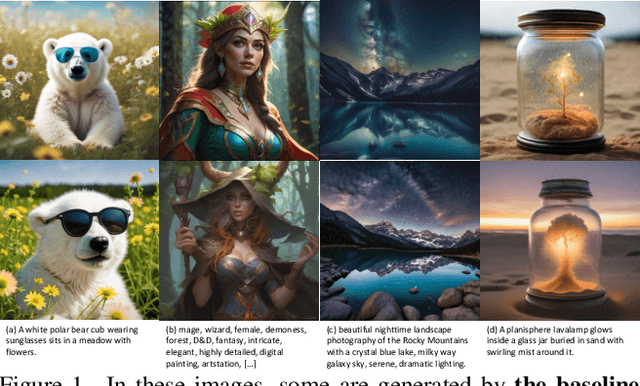
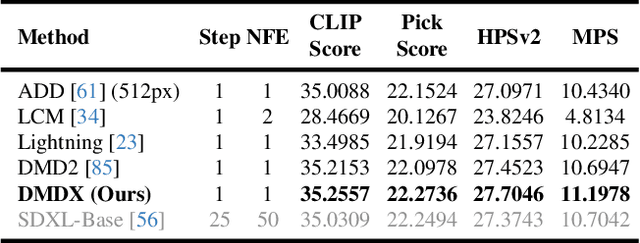
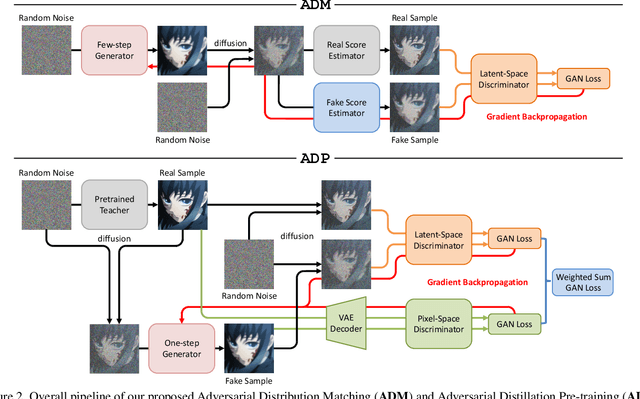
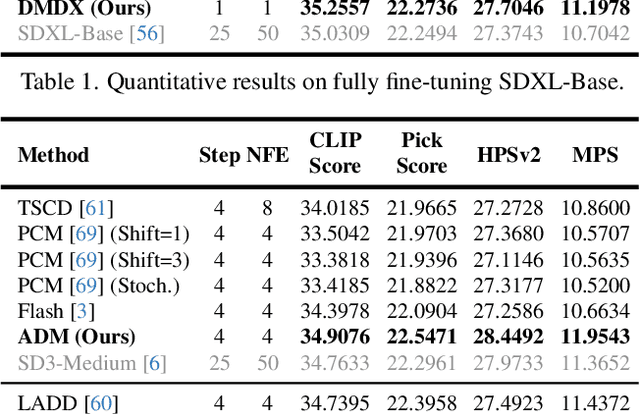
Abstract:Distribution Matching Distillation (DMD) is a promising score distillation technique that compresses pre-trained teacher diffusion models into efficient one-step or multi-step student generators. Nevertheless, its reliance on the reverse Kullback-Leibler (KL) divergence minimization potentially induces mode collapse (or mode-seeking) in certain applications. To circumvent this inherent drawback, we propose Adversarial Distribution Matching (ADM), a novel framework that leverages diffusion-based discriminators to align the latent predictions between real and fake score estimators for score distillation in an adversarial manner. In the context of extremely challenging one-step distillation, we further improve the pre-trained generator by adversarial distillation with hybrid discriminators in both latent and pixel spaces. Different from the mean squared error used in DMD2 pre-training, our method incorporates the distributional loss on ODE pairs collected from the teacher model, and thus providing a better initialization for score distillation fine-tuning in the next stage. By combining the adversarial distillation pre-training with ADM fine-tuning into a unified pipeline termed DMDX, our proposed method achieves superior one-step performance on SDXL compared to DMD2 while consuming less GPU time. Additional experiments that apply multi-step ADM distillation on SD3-Medium, SD3.5-Large, and CogVideoX set a new benchmark towards efficient image and video synthesis.
VINCIE: Unlocking In-context Image Editing from Video
Jun 12, 2025Abstract:In-context image editing aims to modify images based on a contextual sequence comprising text and previously generated images. Existing methods typically depend on task-specific pipelines and expert models (e.g., segmentation and inpainting) to curate training data. In this work, we explore whether an in-context image editing model can be learned directly from videos. We introduce a scalable approach to annotate videos as interleaved multimodal sequences. To effectively learn from this data, we design a block-causal diffusion transformer trained on three proxy tasks: next-image prediction, current segmentation prediction, and next-segmentation prediction. Additionally, we propose a novel multi-turn image editing benchmark to advance research in this area. Extensive experiments demonstrate that our model exhibits strong in-context image editing capabilities and achieves state-of-the-art results on two multi-turn image editing benchmarks. Despite being trained exclusively on videos, our model also shows promising abilities in multi-concept composition, story generation, and chain-of-editing applications.
Autoregressive Adversarial Post-Training for Real-Time Interactive Video Generation
Jun 11, 2025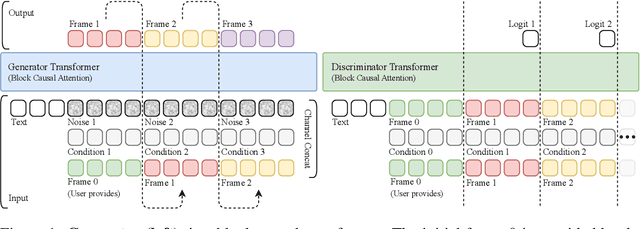
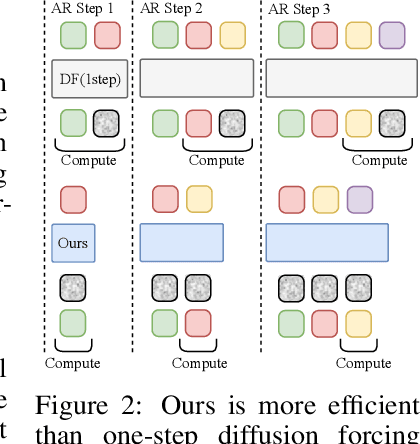

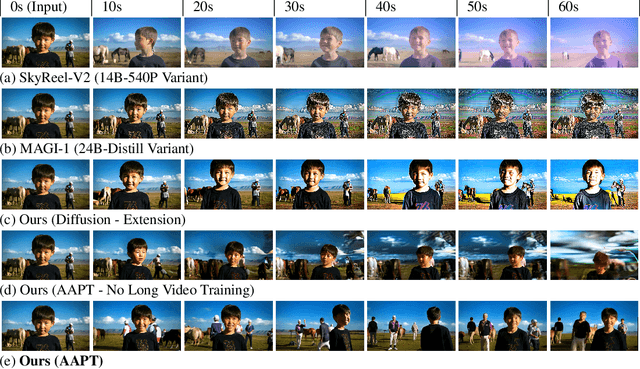
Abstract:Existing large-scale video generation models are computationally intensive, preventing adoption in real-time and interactive applications. In this work, we propose autoregressive adversarial post-training (AAPT) to transform a pre-trained latent video diffusion model into a real-time, interactive video generator. Our model autoregressively generates a latent frame at a time using a single neural function evaluation (1NFE). The model can stream the result to the user in real time and receive interactive responses as controls to generate the next latent frame. Unlike existing approaches, our method explores adversarial training as an effective paradigm for autoregressive generation. This not only allows us to design an architecture that is more efficient for one-step generation while fully utilizing the KV cache, but also enables training the model in a student-forcing manner that proves to be effective in reducing error accumulation during long video generation. Our experiments demonstrate that our 8B model achieves real-time, 24fps, streaming video generation at 736x416 resolution on a single H100, or 1280x720 on 8xH100 up to a minute long (1440 frames). Visit our research website at https://seaweed-apt.com/2
Seedance 1.0: Exploring the Boundaries of Video Generation Models
Jun 10, 2025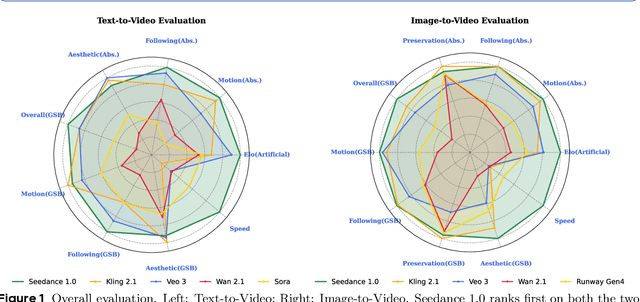
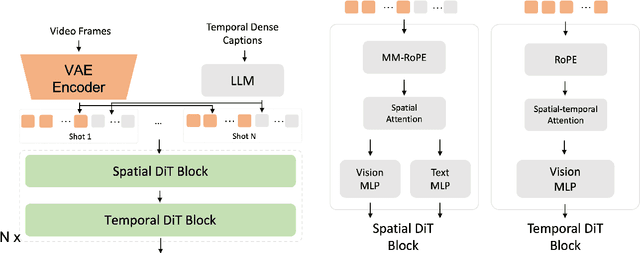

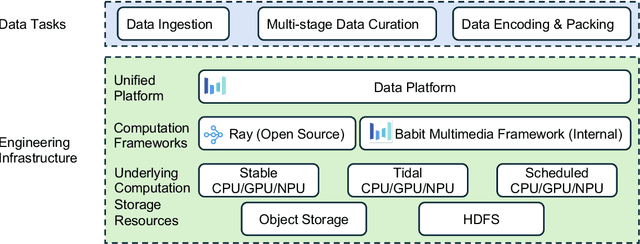
Abstract:Notable breakthroughs in diffusion modeling have propelled rapid improvements in video generation, yet current foundational model still face critical challenges in simultaneously balancing prompt following, motion plausibility, and visual quality. In this report, we introduce Seedance 1.0, a high-performance and inference-efficient video foundation generation model that integrates several core technical improvements: (i) multi-source data curation augmented with precision and meaningful video captioning, enabling comprehensive learning across diverse scenarios; (ii) an efficient architecture design with proposed training paradigm, which allows for natively supporting multi-shot generation and jointly learning of both text-to-video and image-to-video tasks. (iii) carefully-optimized post-training approaches leveraging fine-grained supervised fine-tuning, and video-specific RLHF with multi-dimensional reward mechanisms for comprehensive performance improvements; (iv) excellent model acceleration achieving ~10x inference speedup through multi-stage distillation strategies and system-level optimizations. Seedance 1.0 can generate a 5-second video at 1080p resolution only with 41.4 seconds (NVIDIA-L20). Compared to state-of-the-art video generation models, Seedance 1.0 stands out with high-quality and fast video generation having superior spatiotemporal fluidity with structural stability, precise instruction adherence in complex multi-subject contexts, native multi-shot narrative coherence with consistent subject representation.
SeedVR2: One-Step Video Restoration via Diffusion Adversarial Post-Training
Jun 05, 2025



Abstract:Recent advances in diffusion-based video restoration (VR) demonstrate significant improvement in visual quality, yet yield a prohibitive computational cost during inference. While several distillation-based approaches have exhibited the potential of one-step image restoration, extending existing approaches to VR remains challenging and underexplored, particularly when dealing with high-resolution video in real-world settings. In this work, we propose a one-step diffusion-based VR model, termed as SeedVR2, which performs adversarial VR training against real data. To handle the challenging high-resolution VR within a single step, we introduce several enhancements to both model architecture and training procedures. Specifically, an adaptive window attention mechanism is proposed, where the window size is dynamically adjusted to fit the output resolutions, avoiding window inconsistency observed under high-resolution VR using window attention with a predefined window size. To stabilize and improve the adversarial post-training towards VR, we further verify the effectiveness of a series of losses, including a proposed feature matching loss without significantly sacrificing training efficiency. Extensive experiments show that SeedVR2 can achieve comparable or even better performance compared with existing VR approaches in a single step.
Seaweed-7B: Cost-Effective Training of Video Generation Foundation Model
Apr 11, 2025Abstract:This technical report presents a cost-efficient strategy for training a video generation foundation model. We present a mid-sized research model with approximately 7 billion parameters (7B) called Seaweed-7B trained from scratch using 665,000 H100 GPU hours. Despite being trained with moderate computational resources, Seaweed-7B demonstrates highly competitive performance compared to contemporary video generation models of much larger size. Design choices are especially crucial in a resource-constrained setting. This technical report highlights the key design decisions that enhance the performance of the medium-sized diffusion model. Empirically, we make two observations: (1) Seaweed-7B achieves performance comparable to, or even surpasses, larger models trained on substantially greater GPU resources, and (2) our model, which exhibits strong generalization ability, can be effectively adapted across a wide range of downstream applications either by lightweight fine-tuning or continue training. See the project page at https://seaweed.video/
Training-free Diffusion Acceleration with Bottleneck Sampling
Mar 27, 2025Abstract:Diffusion models have demonstrated remarkable capabilities in visual content generation but remain challenging to deploy due to their high computational cost during inference. This computational burden primarily arises from the quadratic complexity of self-attention with respect to image or video resolution. While existing acceleration methods often compromise output quality or necessitate costly retraining, we observe that most diffusion models are pre-trained at lower resolutions, presenting an opportunity to exploit these low-resolution priors for more efficient inference without degrading performance. In this work, we introduce Bottleneck Sampling, a training-free framework that leverages low-resolution priors to reduce computational overhead while preserving output fidelity. Bottleneck Sampling follows a high-low-high denoising workflow: it performs high-resolution denoising in the initial and final stages while operating at lower resolutions in intermediate steps. To mitigate aliasing and blurring artifacts, we further refine the resolution transition points and adaptively shift the denoising timesteps at each stage. We evaluate Bottleneck Sampling on both image and video generation tasks, where extensive experiments demonstrate that it accelerates inference by up to 3$\times$ for image generation and 2.5$\times$ for video generation, all while maintaining output quality comparable to the standard full-resolution sampling process across multiple evaluation metrics.
CameraCtrl II: Dynamic Scene Exploration via Camera-controlled Video Diffusion Models
Mar 13, 2025Abstract:This paper introduces CameraCtrl II, a framework that enables large-scale dynamic scene exploration through a camera-controlled video diffusion model. Previous camera-conditioned video generative models suffer from diminished video dynamics and limited range of viewpoints when generating videos with large camera movement. We take an approach that progressively expands the generation of dynamic scenes -- first enhancing dynamic content within individual video clip, then extending this capability to create seamless explorations across broad viewpoint ranges. Specifically, we construct a dataset featuring a large degree of dynamics with camera parameter annotations for training while designing a lightweight camera injection module and training scheme to preserve dynamics of the pretrained models. Building on these improved single-clip techniques, we enable extended scene exploration by allowing users to iteratively specify camera trajectories for generating coherent video sequences. Experiments across diverse scenarios demonstrate that CameraCtrl Ii enables camera-controlled dynamic scene synthesis with substantially wider spatial exploration than previous approaches.
Diffusion Adversarial Post-Training for One-Step Video Generation
Jan 14, 2025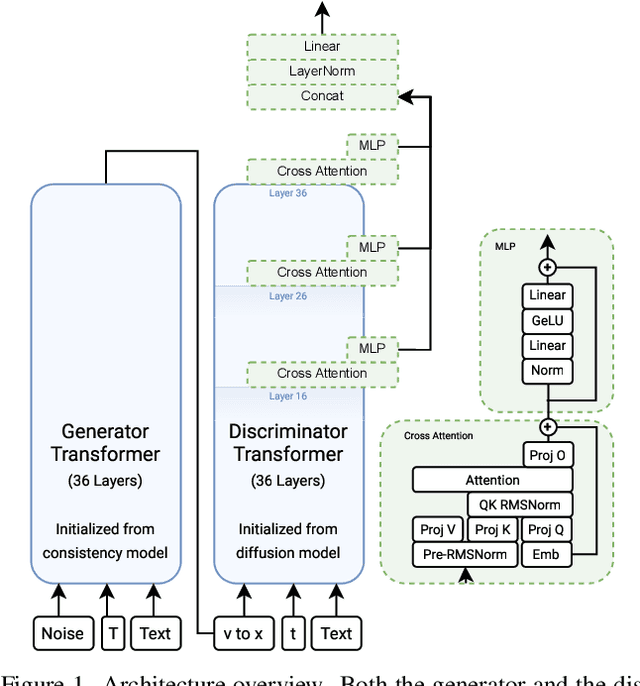
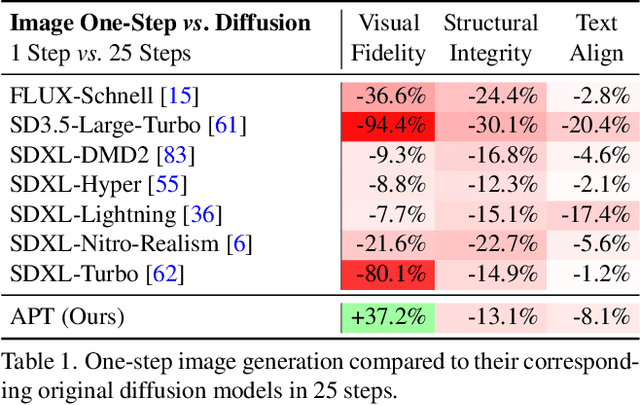

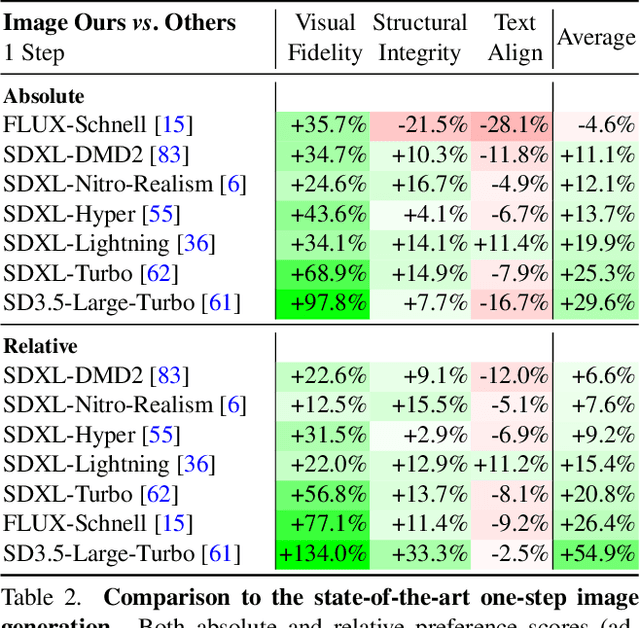
Abstract:The diffusion models are widely used for image and video generation, but their iterative generation process is slow and expansive. While existing distillation approaches have demonstrated the potential for one-step generation in the image domain, they still suffer from significant quality degradation. In this work, we propose Adversarial Post-Training (APT) against real data following diffusion pre-training for one-step video generation. To improve the training stability and quality, we introduce several improvements to the model architecture and training procedures, along with an approximated R1 regularization objective. Empirically, our experiments show that our adversarial post-trained model, Seaweed-APT, can generate 2-second, 1280x720, 24fps videos in real time using a single forward evaluation step. Additionally, our model is capable of generating 1024px images in a single step, achieving quality comparable to state-of-the-art methods.
 Add to Chrome
Add to Chrome Add to Firefox
Add to Firefox Add to Edge
Add to Edge